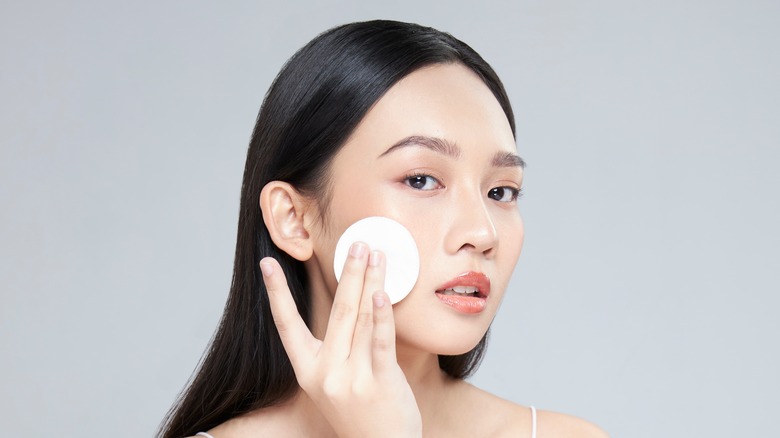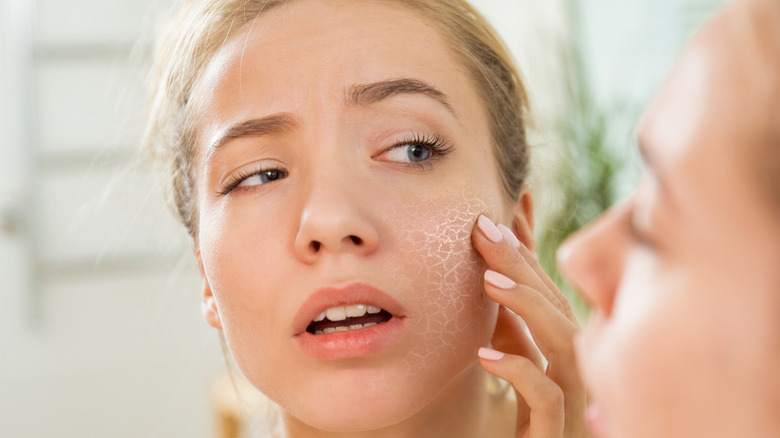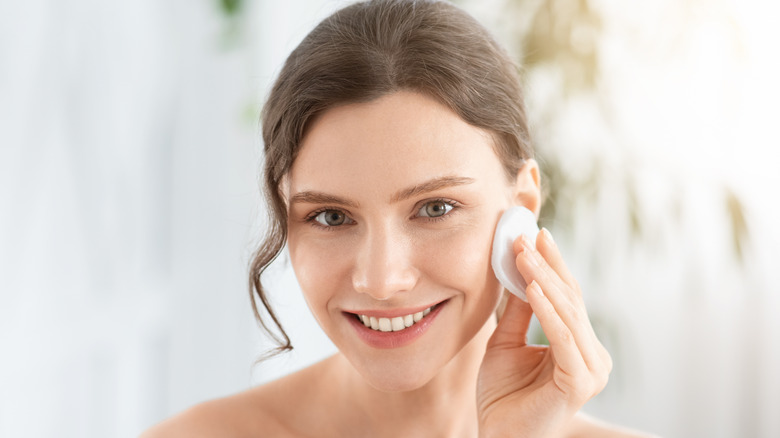Does Witch Hazel Really Dry Your Skin Out? Here's What We Know
Witch hazel is one of those products people always seem to have in their medicine cabinet, and there is a good reason for it. According to Very Well Health, witch hazel has many benefits and can be used to treat various ailments. Its original form is a plant called Hamamelis virginiana and it has been used for centuries to treat skin conditions. Witch hazel contains anti-inflammatory properties, as well as antioxidants, which help fight swelling and redness. Moms may also be excited to hear that it can help with stretch marks. Many use the product to treat acne, as it acts as an astringent and soothes the skin. It can also help with sunburns, rashes, and insect bites.
Many cosmetic companies add witch hazel to toners, makeup removers, and wipes, making it super easy for everyday use. Women's Health advises using an organic cotton pad soaked with witch hazel and applying it directly to the skin or using a spray bottle to mist it onto the face. However, while witch hazel is gentle to use and soothing on the skin, those with dry skin may want to think twice about using the product.
Tannins in witch hazel may cause dry skin
Witch hazel has so many healing properties that many people may naturally reach for it to treat their skin. The plant contains many beneficial antioxidants, but one type of antioxidant is tannins, which you want to say away from if your skin needs hydration, per Paula's Choice. Tannins constrict the proteins on your skin, which can have a temporary effect of minimizing your pores but will ultimately result in dry skin. Witch hazel is also distilled to a liquid form by using denatured alcohol, which causes even more dehydration.
Many products also add alcohol to products containing witch hazel, which can further irritate the skin, Pure Wow reports. Although witch hazel is used to get rid of excess oil and fight acne, its astringent properties can strip the skin of too much of its natural oils and cause blemishes to look worse. Therefore, esthetician Nicole Hatfield advises using witch hazel a few times a week tops to prevent over-drying.
Here's how to use witch hazel without drying out your skin
With all the benefits of witch hazel, it's almost impossible not to use it. Although it can have a dehydrating effect on the skin, there are tips to ensure you stay moisturized. Ipsy recommends using witch hazel after cleansing and then applying serums and moisturizers immediately afterward without allowing the skin to dry. Additionally, be sure to find one alcohol-free or low in alcohol.
While the usual distillation process can contribute to witch hazel's drying effects, some products, such as Humphreys, use a steaming process to rid the product of impurities, such as tannic acid, per Pop Sugar. It also claims to use grain alcohol, which is less drying than synthetic alcohol. Thayers, which is another popular witch hazel brand, also touts its products as alcohol-free. Hello Giggles also advises using witch hazel products that contain moisturizing ingredients like glycerin and rose extract.
If you have dry skin, you don't have to stay away from witch hazel. The consensus seems to be that the benefits outweigh the risks, as long as you keep your skin hydrated and use the right products.


